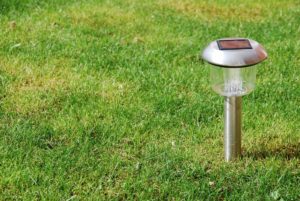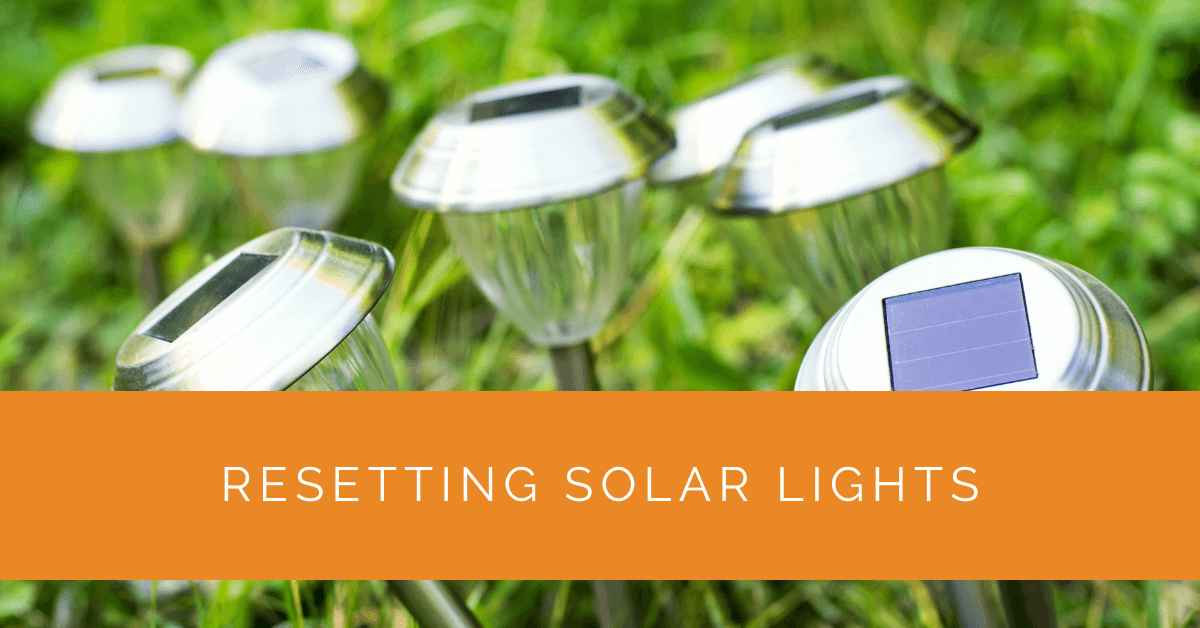Solar lights are a popular choice for outdoor lighting due to their energy efficiency and environmental friendliness. However, these lights may encounter issues that affect their performance over time. If you notice dim or flickering lights, inconsistent charging, or unresponsive sensors, it might be time to reset your solar lights. In this article, we will guide you through resetting your solar lights to help restore their optimal functionality.
Contents
- 1 Key Takeaways
- 2 Reasons for Resetting Solar Lights
- 3 Tools and Materials Needed
- 4 Step-by-Step Guide: Resetting Your Solar Lights
- 5 Troubleshooting Tips
- 6 Maintenance and Prevention
- 7 Case Study: Restoring Functionality of Solar Lights Through Resetting
- 8 Expert Insights From Our Solar Panel Installers About Resetting Solar Lights
- 9 Our Expertise in Solar Lights
- 10 Conclusion
Key Takeaways
- Regularly resetting your solar lights can help address common issues such as battery drainage, malfunctioning sensors, and power interruptions.
- The step-by-step process involves checking and cleaning the solar panel, inspecting the battery and connections, resetting the light sensor, and testing the reset solar light.
- To prevent future problems, practice regular maintenance, including cleaning the solar panel, optimizing battery life, and conducting routine inspections.
Reasons for Resetting Solar Lights
Before diving into the resetting process, it’s important to understand why it may be necessary. Here are some common reasons:
Battery Drain
Over time, the battery in your solar lights may experience drainage, especially if they haven’t received adequate sunlight for charging. Resetting the lights can help recalibrate the battery and improve its performance.
Malfunctioning Sensors
Solar lights rely on sensors to detect ambient light levels and automatically turn on or off. Resetting the lights can often resolve the issue if the sensors become faulty or misaligned.
Power Interruption
Power interruptions, such as a sudden blackout or a disconnected solar panel, can disrupt the normal functioning of your solar lights. Resetting them can help synchronize the components and restore proper operation.

Tools and Materials Needed
Before you begin the resetting process, gather the following tools and materials:
- Safety precautions: Wear protective gloves and eyewear to ensure your safety.
- Screwdriver: Depending on the type of solar light, you may need a screwdriver to remove the cover.
- Soft cloth: Use a soft or sponge to clean the solar panel.
- Replacement parts: Sometimes, you may need replacement batteries or sensors if they are damaged or worn out.
Step-by-Step Guide: Resetting Your Solar Lights
Now let’s walk through the step-by-step process of resetting your solar lights:
- Switching off the solar light: Locate the on/off switch on the solar light and ensure it is in the off position. This prevents any accidental electrical discharge during the resetting process.
- Removing the solar light cover: Use a screwdriver to remove the cover of the solar light carefully. This will expose the internal components that need to be inspected and reset.
- Checking and cleaning the solar panel: Examine the solar panel for any dirt, debris, or obstructions that might hinder its efficiency. Gently clean the panel using a soft cloth or sponge dampened with water. Ensure the panel is completely dry before proceeding.
- Inspecting the battery and connections: Check the battery compartment for any signs of corrosion, loose connections, or damage. Clean the battery terminals with a soft cloth or a small brush if necessary. If the battery is worn out or no longer holds a charge, consider replacing it with a new one.
- Resetting the light sensor: Look for the sensor on the solar light, typically near the solar panel. Depending on the model, you may need to press a reset button or toggle a switch to recalibrate the sensor. Refer to the manufacturer’s instructions for specific guidance.
- Adjusting the settings (if applicable): Some solar lights have adjustable brightness or motion detection range settings. Take this opportunity to review and adjust these settings as desired. Follow the manufacturer’s instructions to make the necessary adjustments.
- Reassembling the solar light: After completing the necessary checks and adjustments, carefully reassemble the solar light. Make sure all components are properly aligned and secured.
- Testing the reset solar light: Now it’s time to test your reset solar light. Place it in an area where it can receive ample sunlight. Turn on the switch and observe if the light functions as expected. Pay attention to the brightness level and responsiveness of the sensors. If the light still exhibits issues, you may need to troubleshoot further or consult a professional.

Troubleshooting Tips
If you encounter any persistent issues with your solar lights even after resetting them, here are some troubleshooting tips:
- Dim or flickering lights: Ensure the solar panel is clean and receives sufficient sunlight. Check the battery capacity and consider replacing it if necessary. Also, make sure there are no light obstructions that may interfere with the sensor’s functionality.
- Inconsistent charging: Verify that the solar panel is positioned correctly to receive direct sunlight. Remove any shading objects or debris that may block the sunlight. Additionally, inspect the battery and connections to ensure they are in good condition.
- Unresponsive sensors: Double-check if the sensor is clean and free from dirt or debris. Adjust the sensor’s position or sensitivity settings, if applicable. If the issue persists, contact the manufacturer for further assistance.
Maintenance and Prevention
To keep your solar lights in optimal condition and minimize the need for frequent resetting, follow these maintenance and prevention tips:
- Cleaning and maintaining solar lights: Regularly clean the solar panel and light surfaces with a soft cloth to remove dirt, dust, and grime. This helps maximize solar absorption and ensures the lights emit their full brightness.
- Tips for extending battery life: Place the solar lights in areas with ample sunlight throughout the day. Avoid installing them in shaded or obstructed locations. Periodically check the battery connections and replace them when they show deterioration.
- Regular inspections and preventive measures: Conduct routine inspections of your solar lights to identify any signs of damage, wear, or malfunction. Address issues promptly by following the appropriate troubleshooting steps or seeking professional assistance.
Case Study: Restoring Functionality of Solar Lights Through Resetting
Background
At Solar Panels Network USA, we prioritize providing effective solutions for maintaining and restoring the performance of solar lighting systems. This case study outlines the process of resetting solar lights to address common issues and improve their functionality.
Project Overview
Our client reported that their garden solar lights had become dim and occasionally flickered. They were unsure of the cause and reached out for assistance. Our objective was to diagnose the problem and reset the solar lights to restore their optimal performance.
Implementation
- Initial Assessment: We began by inspecting the solar lights and their components. The lights showed signs of dim illumination and inconsistent charging, suggesting potential issues with the solar panel, battery, or sensors.
- Gathering Tools and Materials: We assembled the necessary tools, including protective gloves, a screwdriver, soft cloths, and replacement batteries. These tools ensured we could safely and effectively reset the solar lights.
- Switching Off the Solar Lights: To prevent any accidental electrical discharge, we turned off the solar lights using their on/off switches.
- Removing the Solar Light Covers: Using a screwdriver, we carefully removed the covers of the solar lights to expose the internal components. This step allowed us to inspect the battery compartment and sensor areas.
- Checking and Cleaning the Solar Panels: We examined the solar panels for dirt, debris, and obstructions. Using soft cloths dampened with water, we gently cleaned the panels to ensure they could capture maximum sunlight. We ensured the panels were completely dry before proceeding.
- Inspecting the Batteries and Connections: We checked the battery compartments for signs of corrosion, loose connections, or damage. The battery terminals were cleaned with a soft cloth to remove any corrosion. We replaced old batteries with new, high-quality rechargeable ones designed for solar lights.
- Resetting the Light Sensors: We located the sensors near the solar panels and followed the manufacturer’s instructions to reset them. This involved pressing a reset button and adjusting the sensitivity settings to ensure proper functionality.
- Adjusting Settings and Reassembling: After completing the necessary checks and adjustments, we reassembled the solar lights, ensuring all components were properly aligned and secured.
- Testing the Reset Solar Lights: We placed the solar lights in an area with ample sunlight and turned them on. We observed their performance, noting the brightness level and responsiveness of the sensors. The lights operated as expected, providing bright and consistent illumination.
Results
The resetting process significantly improved the performance of the solar lights. The cleaned panels, new batteries, and reset sensors ensured the lights functioned optimally, providing reliable illumination throughout the night.
- Enhanced Performance: The solar lights operated with increased brightness and longer duration, meeting the client’s expectations. The adjustments and cleaning steps restored the lights’ efficiency.
- Client Satisfaction: The client was pleased with the improved functionality and appreciated the clear guidance on maintaining their solar lights. They expressed confidence in handling minor issues independently in the future.
Summary
This case study demonstrates the importance of regularly resetting solar lights to address common issues and maintain optimal performance. By following a systematic approach, including cleaning, inspecting components, and resetting sensors, homeowners can enhance the reliability and efficiency of their solar lighting systems. At Solar Panels Network USA, we are committed to providing expert advice and practical solutions to help our clients enjoy the benefits of solar lighting.
Expert Insights From Our Solar Panel Installers About Resetting Solar Lights
Regularly resetting your solar lights can help address common issues such as battery drainage and malfunctioning sensors. Ensuring the solar panel is clean and the battery connections are secure is vital for maintaining optimal performance.
Senior Solar Technician
Over time, sensors can become misaligned or dirty, leading to unresponsive lights. Resetting the sensors and cleaning the panel can often restore functionality and improve the light’s efficiency.
Lead Installer
Battery performance can degrade in cold weather or due to age. Inspecting and replacing old batteries as part of the resetting process can significantly enhance the reliability of your solar lights.
Solar Energy Consultant
Our Expertise in Solar Lights
At Solar Panels Network USA, we’re here to provide you with valuable information and support regarding solar lighting. With our experience and understanding of the solar lighting industry, our team of experts is prepared to assist you in finding the right lighting solution for your needs. Whether you’re interested in improving your outdoor spaces, conserving energy, or adopting a more sustainable approach, we’re well-equipped to help. Please feel free to contact us with any questions or inquiries.
Conclusion
Resetting your solar lights can often solve common issues and restore optimal functionality. Following the step-by-step guide outlined in this article, you can effectively reset your solar lights and enjoy their energy-efficient illumination. Remember to perform regular maintenance and take preventive measures to ensure your solar lights continue to shine brightly for years to come.
About the Author
Solar Panels Network USA stands at the forefront of solar energy solutions, driven by a team of seasoned solar engineers and energy consultants. With over decades of experience in delivering high-quality solar installations and maintenance, we are committed to promoting sustainable energy through customer-centric, tailored solutions. Our articles reflect this commitment, crafted collaboratively by experts to provide accurate, up-to-date insights into solar technology, ensuring our readers are well-informed and empowered in their solar energy decisions.

